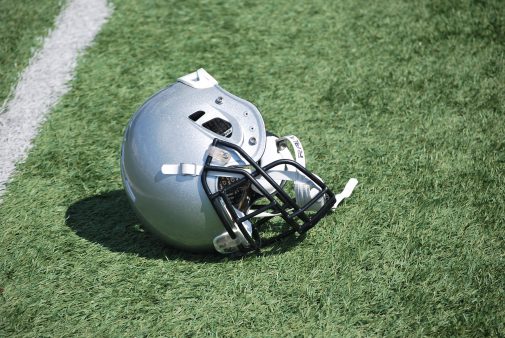The Effects of Concussion in Sport
13 December 2018
Head injury in sport is becoming an increasingly prominent societal challenge. The effect of concussion, or ‘mild traumatic brain injury’ (MTBI), is now frequently reported in sports including rugby and soccer. The ‘ripple-effect’ through society means that some parents are now questioning the involvement of their children in sport. This, against a back-drop of already reducing physical activity in children, means there are strong short- and long-term motivations for reducing MTBI risk across contact sport.
American football is probably leading global efforts in improving a player’s ‘head health’. Here, players need to perform frequent, high-energy collisions as they help their team advance the ball to the End Zone.
Despite players being protected by body padding, a helmet and metal grille, studies have demonstrated that soft tissues – including the brain, are still exposed to a proportion of the impact energy generated during a collision. Whilst the helmets are effective at absorbing some energy generated in bigger impacts – and so preventing serious injury, their foam-based construction prevents similar efficacy during lower-energy collisions. It is probable, therefore, that the majority of player-player, or player-ground collisions, translates energy through the helmet and skull, possibly causing small-scale brain tissue deformation. Considered across the training and playing career of an elite player, this is likely to equate to a high number of impacts that cause some brain tissue deformation.
Playing elite (American) Football has recently been correlated with an increased risk of sustaining long-term mental health disease. Pathological investigation, which has since been serialised in the film Concussion, identified differences in post-mortem brain tissue from elite Footballers, versus a ‘control’ population. Causation of chronic traumatic encephalopathy, or ‘CTE’, has since been linked to the cumulative effective of these multiple brain deformations, increasing risk for elite players.
Head Health Challenges
The National Football League (NFL) and the NFL Players Association have joined forces to create the Engineering Roadmap, a research framework that aims to improve head health within the game. The first programme, a series of three ‘Head Health Challenges’, focussed on identifying more sensitive pitch-side MTBI diagnoses, more protective pitch surfaces and more energy-absorbent helmet inners (‘liners’). In 2015, my research team supported a successful bid by Charles Owen Inc, exploiting computational modelling to design unique, high-performance Football helmet liners to ultimately achieve superior energy absorption. We designed replacement helmet liners comprising complex macroscopic structures that bend – and so absorb energy, when exposed to a compressive load. These exhibited superior performance versus traditional liner materials.

We have now secured a new award from HeadHealthTech (HHT), the second research programme to emerge from the Engineering Roadmap. We are proposing to combine our energy-absorbing structures with our emerging knowledge of visco-elastic material behaviour, to create a helmet liner that is effective over a greater spectrum of impact energies. In theory, this should extend the performance window of a helmet, providing effective protection from low to higher energy collisions. We are the first non-US team to secure a HHT award, highlighting the potential of our approach.
We will be working with leaders from industry and academe and, using advanced computational analysis, will hone the performance of our new liner material. We will simulate the liner behaviour as it is compressed by the head within the helmet during a collision, optimising the macroscopic structure to maximise bending and so energy absorption. This could ultimately serve to reduce brain deformation.
Once we have mastered this, then it is simply a matter of repeating the process to optimise energy reduction when the liner material is exposed to a shear force, generated through a more-typical oblique impact; however, that’s a challenge for another year…
Video: https://www.reuters.com/video/2016/02/02/new-material-could-make-nfl-helmets-safe?videoId=367257833
Dr Peter Theobald
School of Engineering